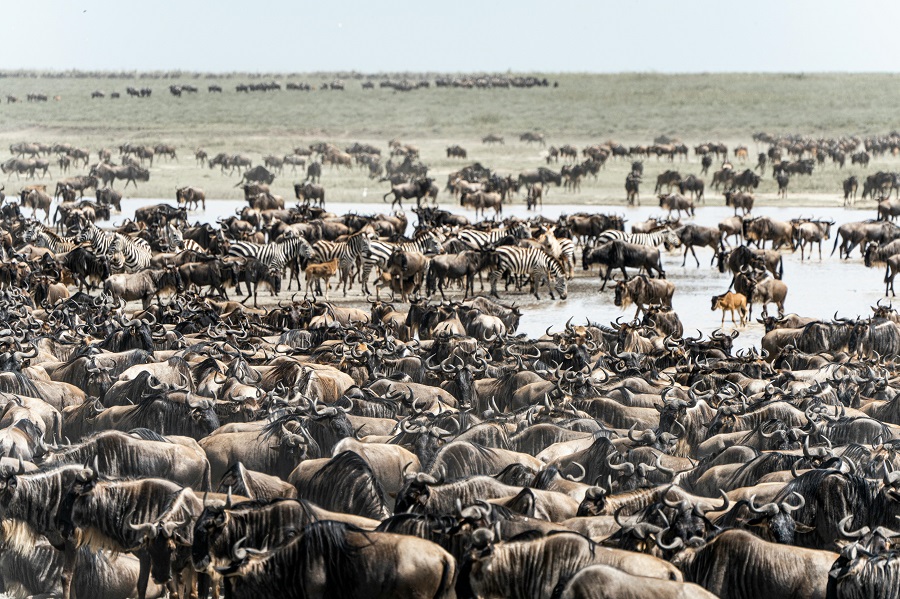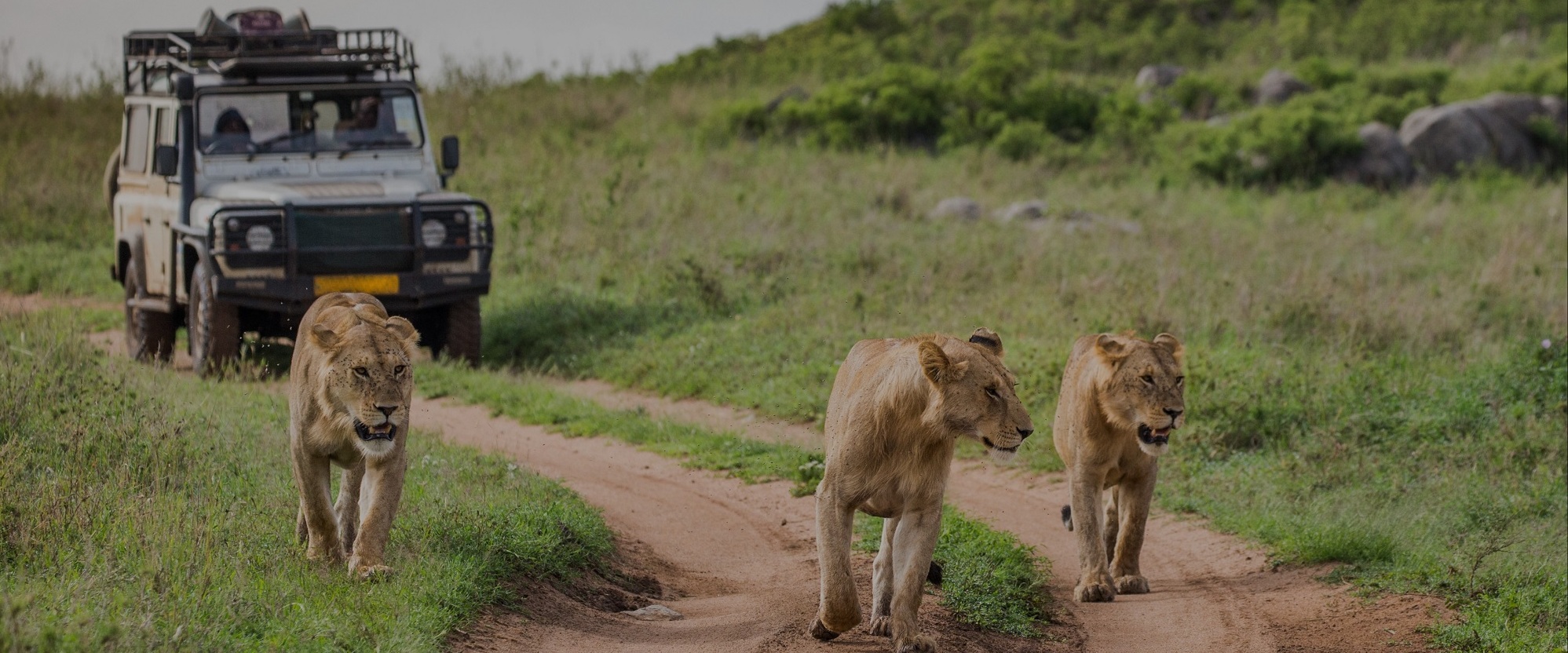
All you need to know about the Great Wildebeest Migration
The Great Wildebeest Migration is one of the most awe-inspiring wildlife spectacles on Earth. Every year, over two million wildebeest, accompanied by hundreds of thousands of zebras and gazelles, embark on a treacherous journey across the vast plains of Tanzania’s Serengeti National Park and Kenya’s Masai Mara National Reserve.
This annual cycle, dictated by the need for fresh grazing land, is an extraordinary display of survival, endurance, and raw natural drama in these wild environs.
Understanding the Migration Cycle: An Annual Continuum
The migration is not a singular event but a continuous journey that follows a well-established route in search of food and water. According to studies, this annual cycle has been prevalent for more than a million years. In this blog, we will provide our readers a breakdown of this cycle month by month for them to make an informed decision on their travel plans.
Month-by-Month Breakdown
January – March: Calving season in the Serengeti
The journey begins in Southern Serengeti’s Ndutu Plains, where the wildebeest gather in massive numbers to give birth. An estimated 500,000 calves are born here annually within a span of 2-3 weeks, creating an incredible spectacle of new life.
This is also the predator’s paradise, as lions, cheetahs, and hyenas take advantage of the vulnerable young calves.
January to March is the perfect time to witness the dramatic birth cycle and predator-prey interactions..
April – May: Grazing in central Serengeti
As the short rains subside, the herds begin moving north towards Central Serengeti and Moru Kopjes. This is a lush and scenic period, offering excellent game viewing with fewer tourists.
April and May is a great time to visit central Serengeti when the landscape is green and serene, but still packed with wildlife.
June – July: Grumeti river crossings
By June, the herds have reached the western corridor of the Serengeti, facing their first major challenge – the Grumeti River. Unlike the chaotic Mara River crossings, the Grumeti River offers fewer but more intense crocodile encounters. It is a good time to visit to witness heart-pounding river crossings with fewer crowds. However, Grumeti may not be accessible to every tourist as it is a private reserve and can be visited mostly by guests staying within its high-end luxurious camps and lodges.
July – October: The Mara river crossings
By late July, a portion of the herds starts to move to Kenya’s Masai Mara, facing the most iconic Mara River crossings. Huge Nile crocodiles await, turning the river into a battleground of survival. The Mara’s lush greenery and abundant prey make this a hotspot for big cat activity.
November – December: Return to Serengeti
With the short rains arriving, the herds start moving southward, back into the Serengeti. This marks a less chaotic but equally mesmerizing migration phase, as the cycle begins again.
Why Serengeti offers the ultimate great migration experience
While both the Serengeti and Masai Mara play crucial roles in the migration, the Serengeti has an edge in offering a more authentic, immersive, and uninterrupted safari experience. This is due to the following reasons.
- The Migration spends more time in the Serengeti: The herds spend approximately nine months in the Serengeti and only about three months in the Masai Mara. This means you have a wider window of opportunity to witness different migration phases in Tanzania.
- Larger size, lesser crowds : The Serengeti is nearly 20 times larger than the Masai Mara, allowing for a less congested safari. Masai Mara’s compact size often leads to crowding at key sightings, diminishing the raw wilderness experience.
- Better viewing of the migration’s key events: If you’re interested in calving season, river crossings, and large-scale movement, Serengeti offers more variety.
- More exclusive lodging options : Serengeti has more secluded camps and luxury mobile tents that move with the migration. Masai Mara, while also having high-end lodges, tends to be more busy.
Best way to experience the Great Migration
To truly appreciate this extraordinary journey, consider few of the below experiences:
- Hot Air balloon safaris: Float over the Serengeti at sunrise for a breathtaking aerial view of the migration.
- Private mobile camps: These camps move with the herds, ensuring you are always in the heart of the action.
- Game drives with expert guides: The Serengeti’s less congested game viewing makes for a more rewarding experience.
If you’re planning a safari to witness the Great Migration, consider visiting the Serengeti for an authentic and less busy experience. The vast landscapes, exclusive lodges, and unparalleled wildlife sightings make it the ultimate destination for safari enthusiasts.




